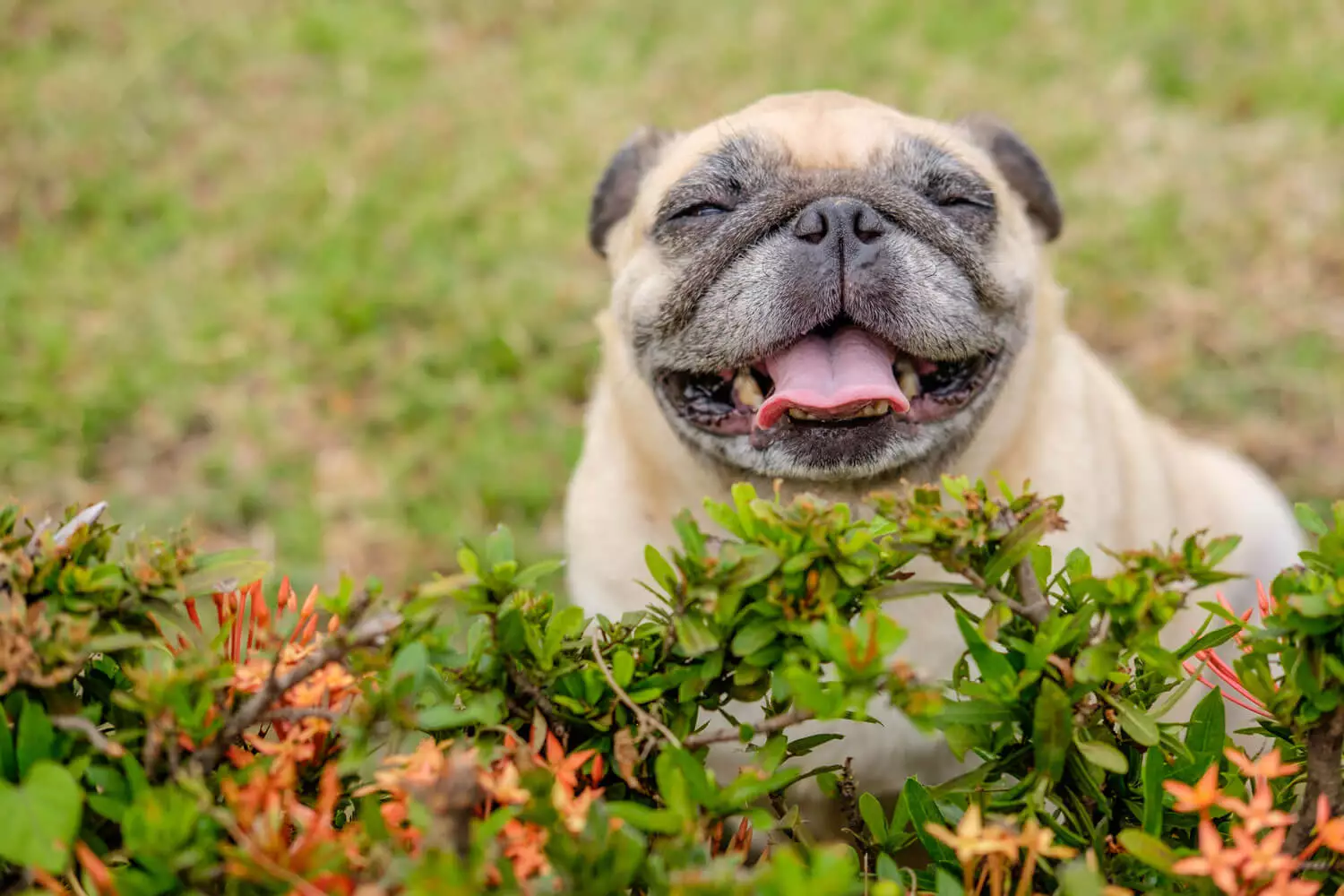
10 Solutions to Keep Pets out of the Garden
There's nothing more frustrating than having all the hard work you went through planting and growing a garden to be ruined in seconds by a digging dog. Here are 10 ways you can have pets and a garden, too. And, no worries: these methods are all safe for pets and kids.
From ultrasonic cat repellent to the motion-activated sprinkler, a dependable pet deterrent comes in many forms. Whether you are trying to keep your pet safe from your garden or your garden safe from your pet, the right deterrents are not only safe but effective.
What is The Best Outdoor Dog and Cat Repellent?
Here are 10 things you can use to keep dogs out of garden:
1. Citrus

Citrus peels, such as lemon, lime, orange, or grapefruit, give off a pungent smell that most pets dislike. Grind them up, add coffee grounds for a stronger odour, and add them to your soil. The smell should reawaken every time you water your plants.
Some pets don't respond to citrus fruits. Some even like the smell of citrus. The good news? The coffee/citrus mulch also makes a fantastic fertilizer for your plants.
2. Repellents Sprays
Dog repellent spray for yard, such as Hagen Non-Aerosol Pet Repellent, can be effective at keeping pets out of your garden, cats and dogs included. It's safe to spray on shrubs, landscapes, and even outdoor furniture.
Reapply after rainfall or as needed to keep curious pets from getting into trouble. If you are looking for a cat deterrent specifically, Petsafe Ssscat is reliable in keeping out both domesticated and feral cats.
3. Plants

Certain plants dogs hate will keep them from going near your garden. This natural outdoor repellent includes Bergamot, Rue, and Citronella, all of which can repel pets. (Watch out for Rue. Some people have a skin allergy to it).
Other plants and dogs hate the smell like marigolds, also called calendula, can work too. Try Scaredy Cat (coleus canina) or herbs such as lavender and rosemary for cats.
Plants can have varying results with different animals. Unfortunately, if the animal's desire is there, a bad smell doesn't always deter.
Alternatively, you can plant flowers or bushes with prickly thorns, such as roses. Pets dislike the thorns as much as we do.
While many of the plants dogs hate will simply deter them from going near them, other plants can be harmful to their health. Check out these 50 Dangerous Garden Plants for Pets to ensure your plants are safe.
4. Blood Meal
Mix blood meal into your soil for another smelly solution for dogs in the flowerbed. Pets' sensitive noses will seek less offensive air. Like orange peels and coffee grounds, blood meal is a great fertilizer.
5. Stones
The addition of stones will help repel cats from your garden. Since cats prefer sandy, smooth soil, stones can keep them from leaving presents in your flowers. Unfortunately, stones won't do much for roaming dogs.
6. Mesh
Chicken wire or mesh laid just under your soil can prevent animals from digging in your garden. You can cut the mesh for your plant roots.
If your pet is a digger, these options may not be effective. Chicken wire, especially, can cause injury to your pet's paws if they dig down to it.
7. Fences

Electronic fences are effective at keeping your own spray to keep dogs away from your garden but can be costly to use just for the garden. If you are considering an electronic fence, you can easily route it around your flower beds.
Physical fences are quite effective at keeping pets out, as long as they are high enough. Generally, animals are looking for easy paths, so fences make good deterrents.
8. Pet "Zoning"
If you can spare some space in how to keep dogs out of your yard for pet-friendly areas, they are less likely to go to your garden, thinking it found some new litter boxes.
If you have a dog that likes to dig, a designated sandbox or dirt-digging area can keep them out of your garden. You may have to "scoop" periodically, but you shouldn't find surprises in your flowers.
You can also plant a catnip plant or honeysuckle bush to attract cats. Honeysuckle has beautiful blooms and a pleasant smell.
9. Ultrasonic Trainers
Ultrasonic trainers, like Petsafe Yard Trainers, can help keep your pet (or others) out of your garden, neighbourhood outdoor cats included. An ultrasonic cat repellent, for example, emits a high-frequency sound that pets hate.
These are a good choice if you are already training your pet with one. They can be a costly solution just to keep pets out of dog repellent for gardens, though. Also, you have to witness the act for the trainer to be effective.
10. Motion Sensor Sprinklers
Sprinklers, like Contech's ScareCrow, are motion-activated training aides that work fantastically to keep pets and animal pests away. The short burst of water and sound scare pets, who remember the negative experience, and will likely not return. Plus, it sure beats running to grab spray bottles
Just be careful - the sprinkler can't distinguish between human and animal visitors! You'll need to either avoid the splash zone or be very quick on your feet.
Frequently Asked Questions
What is outdoor dog repellent, and how does it work?
Outdoor dog repellent is a product designed to deter dogs from entering specific areas, such as gardens, by emitting scents or substances that dogs find unpleasant or irritating.
Is outdoor dog repellent safe for my plants and garden?
Most outdoor dog repellents are formulated to be safe for plants when used as directed. Many are 100% natural.
Can I make my own homemade dog repellent for the garden?
You can create DIY dog repellents using ingredients like vinegar, citrus peels, or cayenne pepper mixed with water. These may help deter dogs but should be reapplied regularly.
What are the common active ingredients in commercial dog repellents?
Common active ingredients include natural oils like citronella, bitter apple, and garlic, as well as synthetic chemicals like capsaicin (from chilli peppers) and amylnonyl ketone.
How do I apply outdoor dog repellent in my garden?
Follow the product instructions for application, which typically involve spraying or spreading the repellent in the areas you want to protect. Be sure to reapply as needed, especially after rain.
Can outdoor dog repellent harm or irritate my own pets?
While outdoor dog repellents are generally safe for humans and pets, keeping your pets away from treated areas until the repellent has dried or settled is a good idea. Always read and follow the product label for safety information.
.png?width=200&height=66&name=logo%20(1).png)


